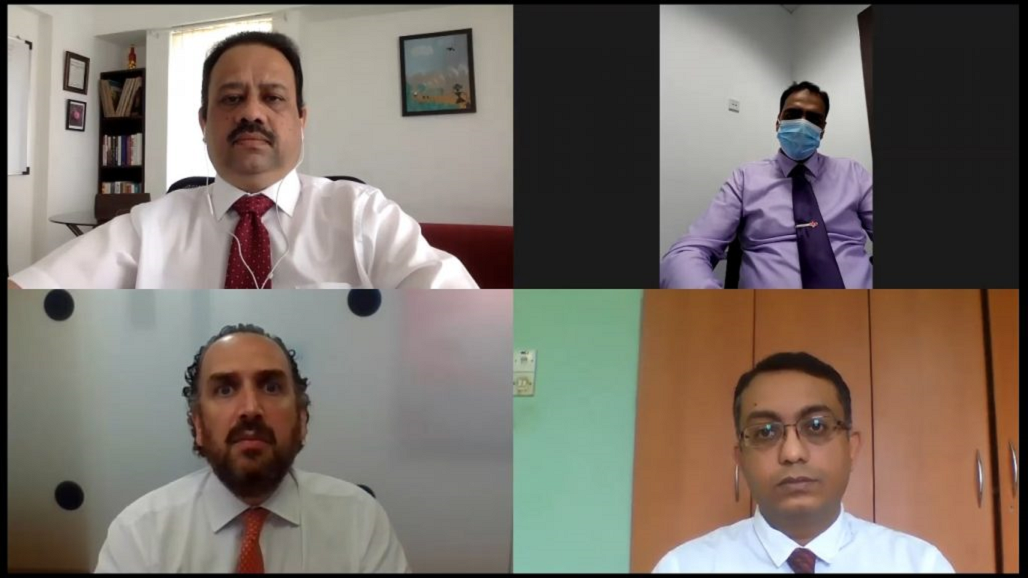![]() The Asian Bankers Association and Fintelekt Advisory Services’ jointly conducted another successful and well-attended webinar on “Optimizing AML Screening” September 9, 2020, with nearly 600 participants from 38 countries
The Asian Bankers Association and Fintelekt Advisory Services’ jointly conducted another successful and well-attended webinar on “Optimizing AML Screening” September 9, 2020, with nearly 600 participants from 38 countries
Hosted by Shirish Pathak, Managing Director, Fintelekt Advisory Services, the webinar featured the following panelists: (1) Douglas Wolfson, Director, Financial Crime Compliance – Asia, LexisNexis Risk Solutions, (2) Vijay Gopaladesikan, Head – FCC Screening Product & List Management, Group Financial Crime Compliance, Standard Chartered Bank and (3) Dayanand Prasad, Principal Officer – AML & KYC Compliance, Emirates NBD Bank (P.J.S.C).
The panelists discussed the risks vs operational effectiveness, challenges around false positives, efficiency and effectiveness and offered practical advice for screening and list management.
Some of the key thoughts presented during the webinar were as follows.
(1) Effectiveness and efficiency can be achieved together
Efficiency and effectiveness are not mutually exclusive and can be achieved together. A thorough understanding of AML risks is the first step towards this. A risk-based approach to AML/CFT provides more flexibility as opposed to a check box approach and allows the institution to focus on their specific risks.
Up to a certain degree without making any compromise to effectiveness, efficiency can be achieved and that should be the primary focus for all financial institutions.
Vijay Gopaladesikan
Head – FCC Screening Product & List Management
Group Financial Crime Compliance, Standard Chartered Bank
A thorough understanding of the various AML screening touchpoints such as on-boarding customers, on-going screening, transaction screening and transaction monitoring is necessary to begin with.
(2) Transaction screening can become more efficient by:
- Considering the list of message types which are critical for screening and having a documented position on the choice of those messages for screening
- Screening of domestic transactions where such markets are risky and risky and susceptible to financial crime, whether or not regulations mandate this
- Defining the necessary watchlists for screening at the local or group levels and by jurisdiction
- Narrowing down the fields within each message type that would contain the critical data for the purposes of screening – based on attributes and target watchlist entries.
(3) For name screening, institutions may consider the following:
- Data available is usually more structured, however, the challenge in name screening is around volumes
- The key determinants are who should be screened for what types of lists, how often should the screening take place
- Targeted screening will help narrow down fields and number of records for screening
- By adding some fields, false positives on name matches can be reduced significantly – such as country or ID match.
An optimum level of automation of the list management process will help not just for screening but also for AML monitoring and reporting.
Dayanand Prasad
Principal Officer – AML & KYC Compliance
Emirates NBD Bank (P.J.S.C)
(4) Reducing False Positives
Reducing false positives systematically is more efficient both for customers that the financial institution would want to retain as well as to investigate customers that potentially do not want to be brought on broad. Financial institutions can reduce false positives through:
- Accuracy and completeness of customer data is important
- Systematically tuning the screening system to reject alerts based on an analysis of why alerts were rejected in the past
- Use of artificial intelligence and machine learning that can help automate the process of rejecting false positive alerts.
(5) Straight-through Processing
By using more technology and creating more straight-through processing, financial institutions can improve their workflow, on-board and screen more customers and spend more time and resources to investigate the riskier cases
Straight-through processing can help the staff at financial institutions focus on the real risk and use their decision-making capabilities to reduce real risk rather than do the busy work of false positive reduction.
Straight-through processing can help the staff at financial institutions focus on the real risk and use their decision-making capabilities to reduce real risk rather than do the busy work of false positive reduction.
Douglas Wolfson
Director, Financial Crime Compliance – Asia
LexisNexis Risk Solutions
AI tools can help resolve risk events using probabilistic approaches through scoring mechanisms (as against deterministic approaches) and is critical especially where data is not available or not captured adequately
Testing of AML screening systems should not be considered as a one-time requirement during the implementation of a screening system. Rather, it should become an on-going programme with all three lines of defense periodically testing the system capability to ensure that the screening tool is operating effectively with customizations and rules that are added.
A full recording of this webinar is available below. You can also visit ABA YouTube channel for recordings of past webinars and the PDF presentation file can be downloaded HERE.


Leave a Reply